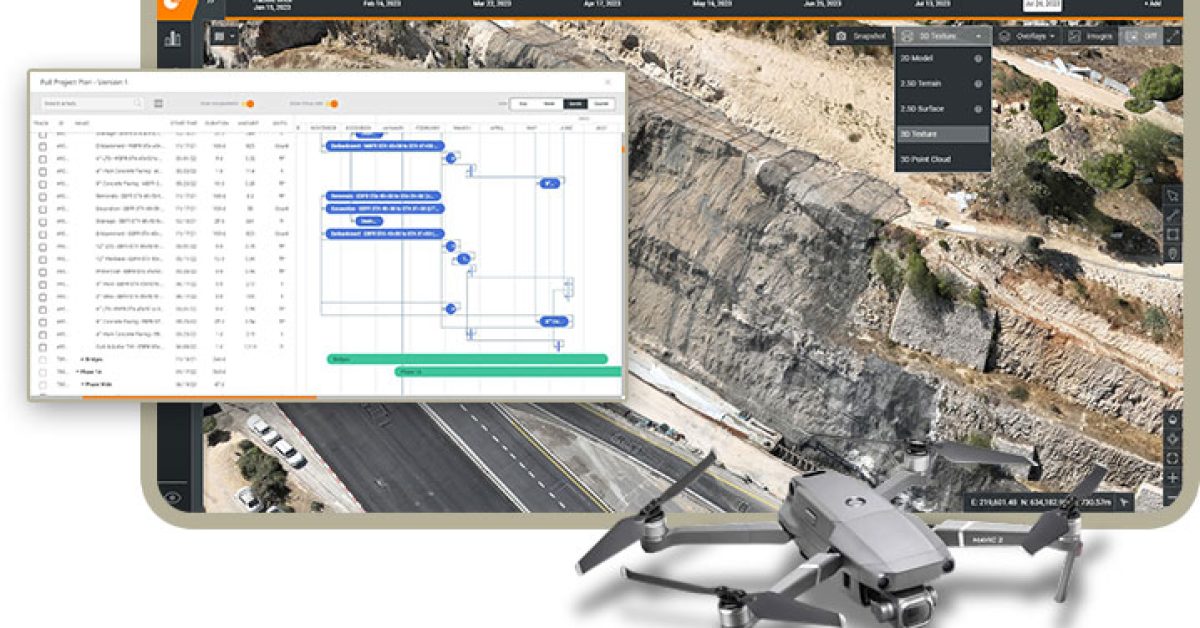The construction industry is undergoing a technological revolution, and heavy civil constructionCivil construction is a branch of engineering that involves the design, construction, and maintenance of the built envir… More is no exception. In a recent webinar hosted by Datumate, industry professionals came together to discuss how they are leveraging technology to win work and improve project outcomes. The webinar provided valuable insights and tips on using tools such as construction project management softwareConstruction project management software is a software application designed to help construction project managers and te… More, automation tools, and advanced surveying technologies. With the availability of these innovative solutions, the heavy civil constructionCivil construction is a branch of engineering that involves the design, construction, and maintenance of the built envir… More industry is well-positioned to tackle challenges and achieve success. This blog post summarize some of the key points uncovered during the webinar by delving into the state of the industry, the tools available, and the importance of collaboration and innovation for future success.
Leveraging Technology in Heavy Civil ConstructionCivil construction is a branch of engineering that involves the design, construction, and maintenance of the built envir… More: A Webinar Recap
The heavy construction industry is currently experiencing significant growth and technological advancements. With a focus on efficiency and productivity, the industry has embraced various tools and technologies to streamline processes and improve project outcomes. Professionals in the field are constantly seeking ways to optimize operations and increase profitability. This has led to the adoption of innovative digital solutions, such as construction project management softwareConstruction project management software is a software application designed to help construction project managers and te… More, automation tools, and advanced surveying technologies.
Technology Tools Available in Heavy Construction
There are a wide range of technology tools available in the heavy construction industry that are revolutionizing how projects are planned, managed, and executed. One such tool is construction project management softwareConstruction project management software is a software application designed to help construction project managers and te… More, which helps in organizing and tracking project information, managing workflows, and facilitating collaboration among team members. Automation tools, such as drones and robotic equipment, are being used for site surveys, inspections, and data collection, leading to improved accuracy and time savings. Advanced surveying technologies, such as 3D modeling and GPS/GIS systems, are being utilized to enhance project design, site preparation, and earthwork activities. These tools not only increase productivity but also improve safety and reduce costly rework.
Overall, the heavy construction industry is embracing technology like never before. Professionals are recognizing the value of digital solutions in optimizing project delivery and achieving better outcomes. With the availability of various tools and technologies, the industry is well-positioned to tackle complex challenges and meet the demands of today’s construction projects. By leveraging these advancements, companies can stay competitive and ensure success in an ever-evolving industry.
The State of the Industry: Leveraging Technology for Success
In the construction industry, the adoption of technology has become crucial for achieving success and staying competitive. According to John Myler (PennDOT), there has been a significant shift towards e-construction efforts in recent years, with advancements in electronic bidding, contract management, and estimates work orders. This has not only streamlined processes but also brought the industry into the next generation. Myler mentioned how they have developed mobile applications for inspectors in the field, replacing old paper-based duties with digital solutions. The industry is moving away from heavy paper documents and embracing data collection and management to gain more leverage and efficiency.
The Future of Success: Embracing Innovation and Collaboration
While PennDOT has made great strides in adopting technology, Myler believes there’s still a long way to go. He emphasized the importance of continually looking for new opportunities and keeping up with industry advancements. With the support of organizations like FHWA and AASHTO, more states are recognizing the need to improve and are seeking ways to integrate technology effectively. However, getting started can be challenging, and Myler is eager to help others avoid the mistakes he made. Collaboration and knowledge-sharing are essential for the industry to progress collectively. The ultimate goal is for every firm to leverage technology to its fullest extent and embrace innovation for a successful future., Transition is finally happening in the construction industry, with technology playing a crucial role. Owners are leading the charge by providing guidance and implementing state mandates that promote the use of technology in projects. This transition is necessary to make the industry more efficient and deliver projects more effectively. The private sector also needs to jump on board and invest in these technologies to see the results. The pressure cooker is here, with all the variables coming together, and now it’s up to the industry leaders to lead the way.
Historically, there has been a divide between design consultants and construction in terms of their relationship with owners. Design consultants have been more involved and buddy-buddy with owners, helping them navigate the technology-driven landscape. On the other hand, construction has been more adversarial and secretive, keeping their cards close to their chests. However, this dynamic is changing with new contracting methods and the realization that the industry is missing out if there is no early and open collaboration with general contractors. The industry is moving towards more transparency and partnering, recognizing the value of input from all parties involved. This shift is necessary to keep up with the changing times and ensure success in the technology-driven construction industry.
Data and Funding: A Game-Changer
Drew Olsen, P.E. (Procore) mentioned how important it is to look at the data from WhiteHouse.gov on awarded projects and funding, “it’s evident that there’s an abundance of work coming our way. Projects like expanding broadband access across the country highlight the gravity of the undertaking. It’s astonishing to see how seriously we’re tackling these challenges. The days of struggling with funding issues and dragging our feet on technology are long gone. We’re in the midst of a transition that’s catapulting us forward, thanks to the funding in place and the increased emphasis on technology adoption.”
The Perfect Storm: A Catalyst for Industry Transformation
The construction industry is at the brink of a significant transformation, and the COVID-19 pandemic has played a role in expediting this process. Government agencies, like PennDOT and Caltrans, have emerged as leaders, embracing cloud-based collaboration platforms. Remote work arrangements uncovered the weaknesses in their data silos, ultimately highlighting the power of collaborative solutions. These cloud platforms have enabled agencies to break down barriers and work together more effectively. This increased focus on collaboration, coupled with the perfect storm of factors such as a surge in projects, rising material prices, and an aging workforce, is creating a pressure cooker situation. The urgency to address these challenges is apparent, especially as construction has historically lagged behind in technology adoption. However, with the right approach and collective effort, we can leverage this perfect storm to usher in a new era for the industry—one that ensures long-term change and progress.



